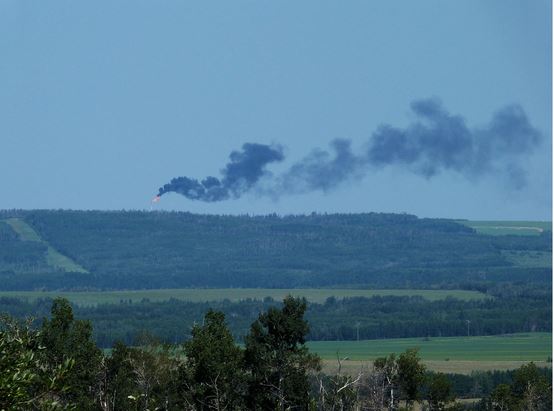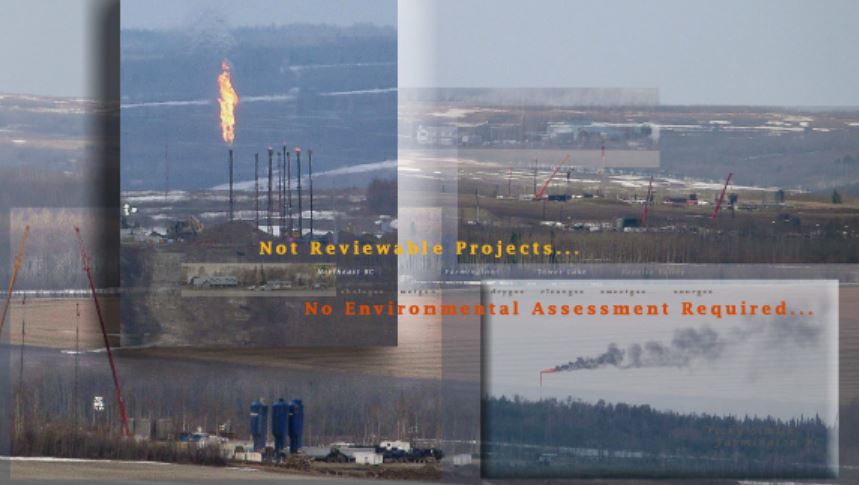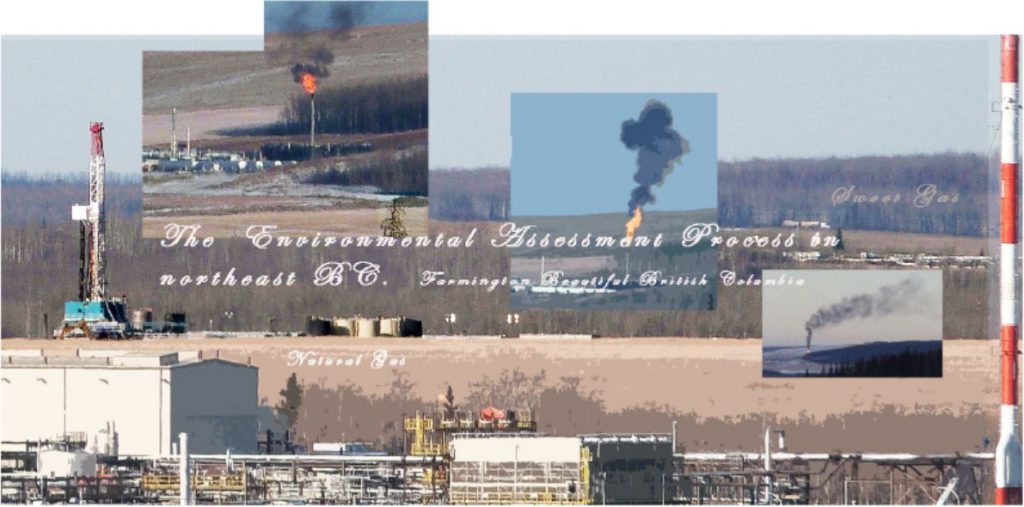Volatile organic compounds (VOCs) in indoor air and tap water samples in residences of pregnant women living in an area of unconventional natural gas operations: Findings from the EXPERIVA study by Élyse Caron-Beaudoin, Kyle Powys Whyte, Maryse F. Bouchard, Jonathan Chevrier, Sami Haddad, Ray Copes, Katherine L. Frohlich, Dean Dokkie, Treaty 8 Tribal Association, Sonje Juul, Michèle Bouchard, Marc-André Verner, Science of The Total Environment Volume 805, 20 January 2022, 150242
https://doi.org/10.1016/j.scitotenv.2021.150242
Highlights
- Northeastern British Columbia (NEBC) is a region of natural gas exploitation.
- Unconventional natural gas operations may release volatile organic compounds (VOC).
- We measured a suite of VOC in indoor air and tap water from 85 pregnant women in NEBC.
- Density of UNG wells was associated with indoor air chloroform, acetone and BTEX.
- Density of UNG wells was associated with tap water trihalomethanes.
Abstract
Background
Northeastern British Columbia (Canada) is an area of unconventional natural gas (UNG) exploitation by hydraulic fracturing, which can release several contaminants, including volatile organic compounds (VOCs). To evaluate gestational exposure to contaminants in this region, we undertook the Exposures in the Peace River Valley (EXPERIVA) study.
Objectives
We aimed to: 1) measure VOCs in residential indoor air and tap water from EXPERIVA participants; 2) compare concentrations with those in the general population and explore differences related to sociodemographic and housing characteristics; and 3) determine associations between VOC concentrations and density/proximity to UNG wells.
Methods
Eighty-five pregnant women participated. Passive air samplers were analyzed for 47 VOCs, and tap water samples were analyzed for 44 VOCs. VOC concentrations were compared with those from the Canadian Health Measure Survey (CHMS). We assessed the association between different metrics of well density/proximity and indoor air and tap water VOC concentrations using multiple linear regression.
Results
40 VOCs were detected in >50% of air samples, whereas only 4 VOCs were detected in >50% of water samples. We observed indoor air concentrations >95th percentile of CHMS in 10–60% of samples for several compounds (acetone, 2-methyl-2-propanol, chloroform, 1,4-dioxane, hexanal, m/p-xylene, o-xylene, styrene, decamethylcyclopentasiloxane, dodecane and decanal). Indoor air levels of chloroform and tap water levels of total trihalomethanes were higher in Indigenous participants compared to non-Indigenous participants. Indoor air levels of chloroform and acetone, and tap water levels of total trihalomethanes were positively associated with UNG wells density/proximity metrics. Indoor air BTEX (benzene, toluene, ethylbenzene, xylenes) levels were positively correlated with some well density/proximity metrics.
Conclusion
Our results suggest higher exposure to certain VOCs in pregnant women living in an area of intense unconventional natural gas exploitation compared with the general Canadian population, and that well density/proximity is associated with increased exposure to certain VOCs.
Graphical abstract

Higher levels of organic pollutants found in homes located near natural gas wells: U of T study by Don Campbell, Sept 23, 2021, University of Toronto
A University of Toronto study has found that those living close to natural gas wells are exposed to higher levels of certain organic pollutants in their homes.
The study looked at levels of volatile organic compounds (VOCs) found in the air and drinking water in homes of pregnant women living in a region of northeastern British Columbia.

Élyse Caron-Beaudoin
“There’s very little research about indoor air quality in regions with a lot of unconventional natural gas exploitation,” says Élyse Caron-Beaudoin, an assistant professor in the department of health and society at U of T Scarborough and lead author of the study.
For the study, 85 pregnant women from the Peace River region were recruited and passive air samplers were placed in their homes. Water samples were also taken from their kitchen taps. Researchers found that 40 out of the 47 VOCs tested for were detected in air samples, while three out of 40 VOCs tested for were detected in water samples.
VOCs are organic chemicals, some of which have negative short- and long-term health effects. They are released by a variety of products and industrial processes.
The researchers also looked at how many natural gas wells were located near homes as well as the distances. They found that the amount and proximity of natural gas wells to a home were linked to higher levels of certain VOCs. They also accounted for other factors related to exposure levels, including whether a home had an attached garage, the tap water source and whether the study participant smokes or is exposed to second-hand smoke.
They also included each participant’s Indigenous status. A previous pilot study done in the same region of B.C. by Caron-Beaudoin found higher levels of VOC metabolites in the urine samples of pregnant Indigenous women compared to pregnant non-Indigenous women.
In the current study, the levels of VOCs associated with the amount and proximity of natural gas wells were similarly higher in the homes of Indigenous participants. While the researchers are unsure why higher levels were found in the homes of Indigenous participants, they point to research that shows ethnicity, Indigeneity and socioeconomic status all being linked to heightened health risks from industrial activities.
The study, published in the journal Science of the Total Environment, also compared levels to the Canadian average. For a few of the VOCs – in particular acetone and chloroform in air samples, and trihalomethanes (THMs) in water samples – some participants recorded levels that placed them in the top 95th percentile in Canada. In other words, they had the highest exposure levels compared to the general Canadian population.
THMs in particular stood out. More than 60 per cent of study participants were found to be above the 95th percentile of exposure levels compared to the Canadian average.
![]() After Encana/Ovinvitv illegally frac’d Rosebud’s drinking water aquifers, water wells went bad with methane and ethane throughout the community, some wells went dry. (Methane, ethane, propane, pentane, butane, sour gas are not listed as contaminants of concern in drinking water in Canada, I think because the oil and gas industry is leaking high levels of gases every where companies operate.) One of the contaminants found (during routine water testing in 2006) in Rosebud Hamlet drinking water at unsafe levels was THM, leading the health and water regulators to order that residents not drink the water, supplied bottled water, and provided special tap filters for the residents (but not for those living outside the hamlet like me). THMs can be formed when water contaminated with methane is chlorinated, which the hamlet water was. After the contamination (Encana tests also found BTEX in the water), it was treated differently, and since Dec 2020, safe alternate water is pipelined to the community at a massive cost. As usual in rape & pillage Canada, Encana paid nothing, only Canadian taxpayers paid for the waterline.
After Encana/Ovinvitv illegally frac’d Rosebud’s drinking water aquifers, water wells went bad with methane and ethane throughout the community, some wells went dry. (Methane, ethane, propane, pentane, butane, sour gas are not listed as contaminants of concern in drinking water in Canada, I think because the oil and gas industry is leaking high levels of gases every where companies operate.) One of the contaminants found (during routine water testing in 2006) in Rosebud Hamlet drinking water at unsafe levels was THM, leading the health and water regulators to order that residents not drink the water, supplied bottled water, and provided special tap filters for the residents (but not for those living outside the hamlet like me). THMs can be formed when water contaminated with methane is chlorinated, which the hamlet water was. After the contamination (Encana tests also found BTEX in the water), it was treated differently, and since Dec 2020, safe alternate water is pipelined to the community at a massive cost. As usual in rape & pillage Canada, Encana paid nothing, only Canadian taxpayers paid for the waterline.![]()
“These levels are really high,” says Caron-Beaudoin. “For some of the participants, it was even over the guidelines for safe drinking water – so we had to contact them to let them know.”
She adds that acetone and chloroform are used as solvents in fracking fluid, while THMs occur when chlorine used to disinfect water reacts with natural organic matter. THM levels tend to be higher in areas close to natural gas exploitation because greater amounts of wastewater are generated during the extraction process, she said.
Pregnant women were recruited for the study because of the potential negative birth outcomes linked to living close to natural gas operations. Caron-Beaudoin points to research finding higher rates of pre-term births, low birth weight and heart malformations, among others. There’s also a link to higher cancer rates in children and increased levels of chronic respiratory disease in adults – such as asthma and chronic obstructive pulmonary disease – and cancer in adults.
Caron-Beaudoin leads the only research group that is actively looking at the potential health impacts linked to natural gas exploitation in Canada. As one of the largest global producers of natural gas, she says more research needs to be done in Canada on its potential health effects.
The area of northeastern British Columbia where the research participants are located will also be home to a massive new gas plant that could increase the number of wells in the area to more than 100,000.
“This is happening with very little data on exposure levels – including air and water quality,” Caron-Beaudoin says. “There’s currently no monitoring program, and as a result, no way to check the health status of people living near these wells.”
The research was supported by the Canadian Institutes of Health Research.
Homes near B.C. fracking sites have more pollutants: study on health impacts by The Canadian Press, Sept 23, 2021, CTV News Vancouver
A new study has found homes close to fracking oil and gas wells in British Columbia have higher levels of certain organic pollutants, which may lead to short- and long-term health effects.
Elyse Caron-Beaudoin, lead author and a professor in the department of health and society at the University of Toronto, Scarborough, says researchers took water and air samples from the homes of 85 pregnant women in the Peace River area of B.C. for one week.
She says pregnant women were recruited for the study because of the potential negative health effects of living close to natural gas wells, including higher rates of pre-term births, low birth weight and heart malformations.
Caron-Beaudoin says results showed that air samples in the homes had higher levels of chemicals used in fracking such as acetone and chloroform, and those contaminants were found in their study subjects.
She says Canada is one of the largest producers of natural gas in the world using fracking, a process that injects fluids deep underground to release the gas, yet there are no studies on the potential health impacts of the industry. ![]() Health Canada will not even release their 2012 report admitting serious risks to air and water from frac’ing and AER will not make public their data and reports on industry’s horrific leaking well problems in cities, including under the new airport terminal in Calgary, a church in Medicine Hat, etc., even though Alberta Health admitted (in writing) “Acute-Life threatening” risks & “Neurological effects” from those leakers. Don’t expect Canadian authorities or courts to serve the public interest or protect public health when it comes to the oil and gas industry. We are on our own. Data might lead to frac’ing being banned. When there is no data, or it’s kept secret, companies can keep frac’ing and lying to the public and those they harm, and regulators can continue to enable them, lie for them and expose frac’d Canadians to the endless harms.
Health Canada will not even release their 2012 report admitting serious risks to air and water from frac’ing and AER will not make public their data and reports on industry’s horrific leaking well problems in cities, including under the new airport terminal in Calgary, a church in Medicine Hat, etc., even though Alberta Health admitted (in writing) “Acute-Life threatening” risks & “Neurological effects” from those leakers. Don’t expect Canadian authorities or courts to serve the public interest or protect public health when it comes to the oil and gas industry. We are on our own. Data might lead to frac’ing being banned. When there is no data, or it’s kept secret, companies can keep frac’ing and lying to the public and those they harm, and regulators can continue to enable them, lie for them and expose frac’d Canadians to the endless harms.![]()
B.C. has about 10,000 active wells, and the study says the area could potentially see an increase in their number to more than 100,000.
Study Finds Elevate Chemical Contamination in Homes Near Fracking Sites by Jeff Blagden, Sept 24, 2021
A new study has found a troubling link between fracking in Northeastern BC, and chemical contamination in nearby homes.
Conducted by Elyse Caron-Beaudoin at the University of Toronto, the study took samples from the homes of 85 pregnant women in the Peace Region.
Pregnant women were used in the study due to the heightened risk of negative affects.
In the study, researchers found that the amount of certain chemical contaminants in the homes were higher in those closer to natural gas well sites.
The chemicals discovered are the same as those used in the fracking process.
While they cannot say for sure whether fracking caused the elevated levels, they claim there is a clear association.
Homes near fracking sites in B.C. have higher levels of some pollutants, study finds, Researchers found that the amount and proximity of natural gas wells to the home were linked to higher levels of certain chemical contaminants, they said a news release by Hina Alam, The Canadian Press, Sep 24, 2021, Vancouver Sun
A new study has found homes close to where fracking was used to extract natural gas in British Columbia have higher levels of certain organic pollutants, which may lead to short- and long-term health effects. Elyse Caron-Beaudoin, lead author and a professor in the department of health and society at the University of Toronto, Scarborough, said researchers took water and air samples from the homes of 85 pregnant women in the Peace River area of B.C. for one week. Pregnant women were recruited for the study because of the potential negative health effects of living close to natural gas wells using fracking, including higher rates of preterm births, low birth weight and heart malformations, she said. …
The study, published in the journal Science of the Total Environment this week, measured a number of different chemicals in the homes of the pregnant women and compared the results with the general Canadian population to see if there were any differences, she said.
Researchers found that the amount and proximity of natural gas wells to the home were linked to higher levels of certain chemical contaminants, they said a news release.
Caron-Beaudoin said results showed that air samples in homes near the natural gas well sites had higher levels of chemicals used in fracking, such as acetone and chloroform, and those same contaminants were found in their study subjects.
“We cannot say that hydraulic fracturing activity was causing the levels of acetone and chloroform in those residences, but we can say that they were associated with each other,” she said in an interview.
The study says there is a need to assess health risks associated with fracking given the documented effects of prenatal exposure to volatile organic chemicals used in these operations, and the growing evidence suggesting associations with poorer birth outcomes.
Caron-Beaudoin said the study also found higher levels of chemicals in the homes of Indigenous study participants than others.
While researchers are unsure why levels were higher in Indigenous homes, she said it could be associated with ethnicity and socioeconomic status all being linked to heightened health risks from industrial activities.
“There seems to be a disproportionate environmental burden towards Indigenous (people),” she said.
B.C. has about 10,000 active wells, and the study says the area could potentially see an increase in their number to more than 100,000.
The B.C. Oil and Gas Commission said in an email response about the study that it is committed to protecting public safety and the environment in the area where oil and gas activities take place. ![]() I call Frac Shit! Canadian regulators, notably OGC, AER, CER, don’t give a damn about public or worker safety and health when it comes to the oil and gas industry. They are captured by the industry they are supposed to regulate; they work hard to cover-up crimes by companies and hide the horrific harms caused to those of us living frac’d. Notice that the OGC used the usual escape hatch word “committed” which means nothing in terms of appropriate responsible action and they sleazily avoided the word “health.”
I call Frac Shit! Canadian regulators, notably OGC, AER, CER, don’t give a damn about public or worker safety and health when it comes to the oil and gas industry. They are captured by the industry they are supposed to regulate; they work hard to cover-up crimes by companies and hide the horrific harms caused to those of us living frac’d. Notice that the OGC used the usual escape hatch word “committed” which means nothing in terms of appropriate responsible action and they sleazily avoided the word “health.”![]()
I keep reading between the lies.
GOODMAN ACE
It said it would thoroughly review the study to understand the findings.
“Within northeast B.C., there are both fixed monitoring stations recording air quality data and ambient air monitoring equipment deployed in the field,” the statement said. ![]() Ya, sure, upwind of the polluters, just like how AER does it in Alberta, or when there’s an investigation, they tell the companies involved who then turn off their offenders to make sure all smells nice and clean and the data shows nothing harmful.
Ya, sure, upwind of the polluters, just like how AER does it in Alberta, or when there’s an investigation, they tell the companies involved who then turn off their offenders to make sure all smells nice and clean and the data shows nothing harmful.![]()
“In response to health concerns, the Ministry of Health led a three-phase human health risk assessment exploring concerns about human health risks relating to oil and gas activities. The project began in 2012 and all phases have been completed.” ![]() In my view, the project was garbage, done by a company controlled by Encana/Ovintiv – one of the major polluters and law violators. Besides, even if it was a proper assessment, it was years ago, long before the current enslaught of wells, frac quakes, spills and fumes.
In my view, the project was garbage, done by a company controlled by Encana/Ovintiv – one of the major polluters and law violators. Besides, even if it was a proper assessment, it was years ago, long before the current enslaught of wells, frac quakes, spills and fumes.![]()
Caron-Beaudoin said Canada is one of the largest producers of natural gas in the world, yet there are virtually no studies on the potential health impacts of the industry.
“So, I think is quite interesting and worthy of attention.”

Refer also to:
2006 09 21: Water usage advisory issued for Rosebud
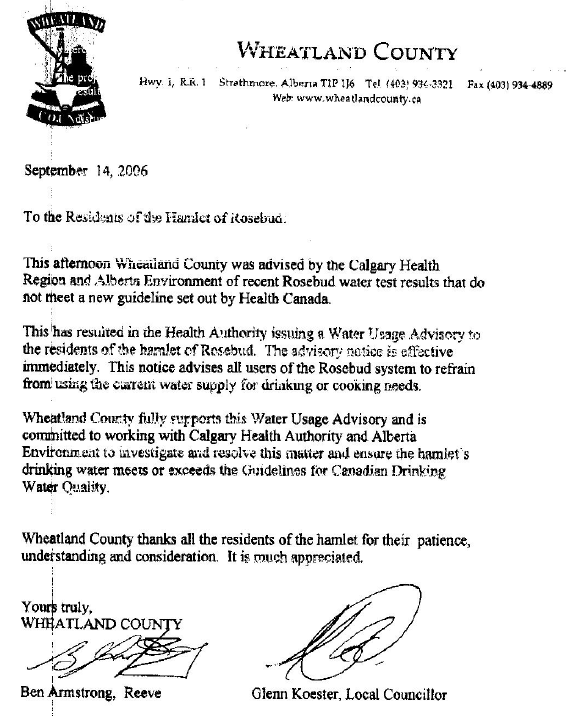
2012 11 08: B.C. gas-well health study by Intrinsik Environmental Sciences Inc. called into question
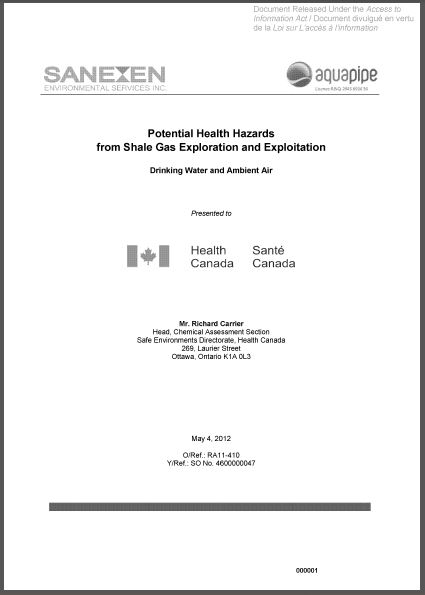
Health Canada still has not released the report to the public
2017 11 11 (Report dated Nov 2016): To Honour the Fallen on Remembrance Day: Make public AER’s secret “D79 Abandoned Well Methane Toxicity Preliminary Assessment” & Appendix 2 by Alberta Health, Admitting “Acute-Life threatening” risks & “Neurological effects”

AER still has not released the report or data to the public –
not even to the many at risk

2021 09 25: Comments, tables and image in from Bob Donnan in heavily frac’d Pennsylvania:
British Columbia = Pennsylvania?
Excerpts from Jessica Ernst’s latest blog about a study in BC, are eerily similar to Pennsylvania: past, present and future!
THM’s sound all too familiar, remember when drilling ramped-up here in Pennsylvania and we had problems with chlorinated public water from the Mon River? Our PAWC (public water) report from 2008 showed levels nearly double what is considered the safe (80) maximum level, 156, before averaging:
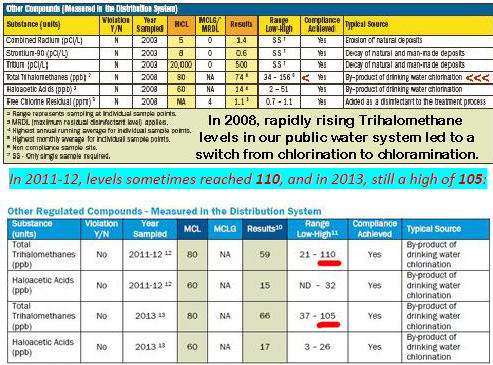
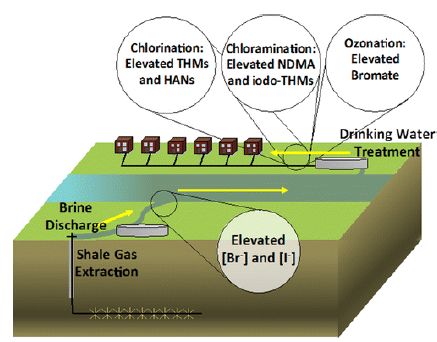
While studying our situation here in western Pennsylvania with high trihalomethane levels, of which chloroform is one, I learned that some of the greatest risk comes from the “gassing off” in a hot shower, so it’s recommended to ventilate your bathroom well, and take cooler showers.
Acetone also rings a bell, since water from one of the water wells tested in Hickory, back around 2009, contained acetone among other contaminants. The drilling company originally tried to blame it on the wife’s nail polish remover (?) then later on some decorative plastic rocks used as mulch around the well head. Neither claim held any water.
Carbon copy of Pennsylvania! And the largest percentage of those next 90,000 wells will be in western Pennsylvania and the counties along the northern tier of Pennsylvania. …
***
A few of images of what residents living frac’d in NEBC breath:
